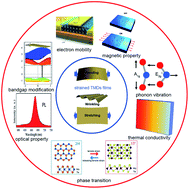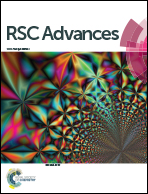Tuning the physical properties of ultrathin transition-metal dichalcogenides via strain engineering
Abstract
Transition-metal dichalcogenides (TMDs) have become one of the recent frontiers and focuses in two-dimensional (2D) materials fields thanks to their superior electronic, optical, and photoelectric properties. Triggered by the growing demand for developing nano-electronic devices, strain engineering of ultrathin TMDs has become a hot topic in the scientific community. In recent years, both theoretical and experimental research on the strain engineering of ultrathin TMDs have suggested new opportunities to achieve high-performance ultrathin TMDs based devices. However, recent reviews mainly focus on the experimental progress and the related theoretical research has long been ignored. In this review, we first outline the currently employed approaches for introducing strain in ultrathin TMDs, both their characteristics and advantages are explained in detail. Subsequently, the recent research progress in the modification of lattice and electronic structure, and physical properties of ultrathin TMDs under strain are systematically reviewed from both experimental and theoretical perspectives. Despite much work being done in this filed, reducing the distance of experimental progress from the theoretical prediction remains a great challenge in realizing wide applications of ultrathin TMDs in nano-electronic devices.

- This article is part of the themed collection: 2020 Reviews in RSC Advances


 Please wait while we load your content...
Please wait while we load your content...